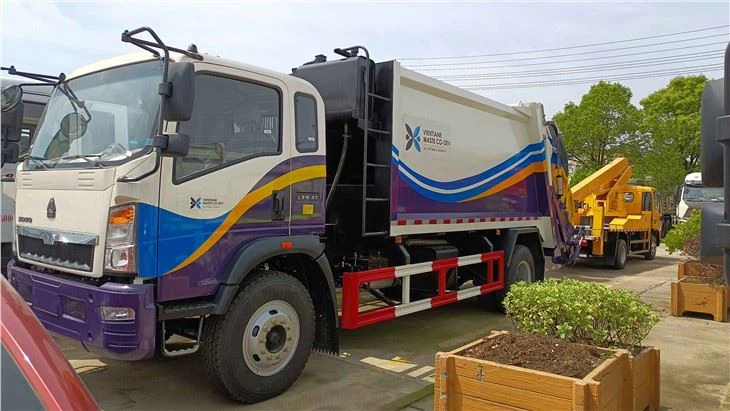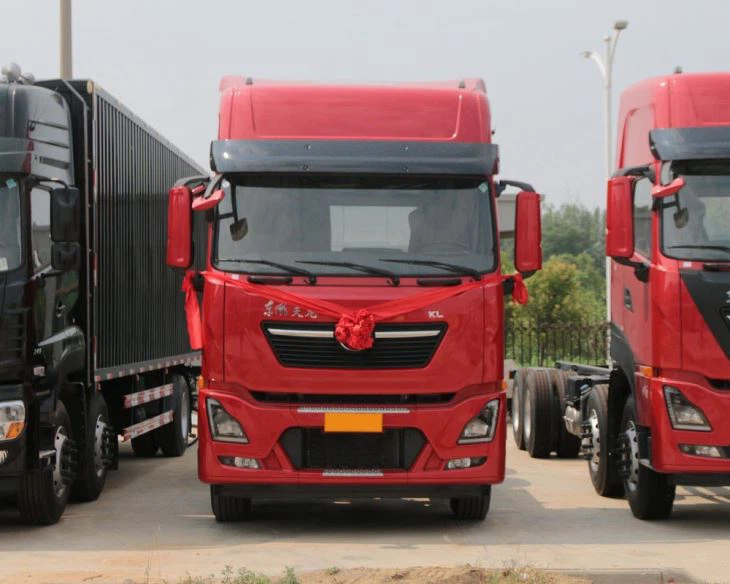Sewer Cleaner Truck: The Essential Solution to Urban Drainage Management

Urban environments are continuously challenged by the efficient management of their sewage and drainage systems. A sewer cleaner truck plays a crucial role in maintaining these systems, ensuring that waste is effectively transported and preventing flooding and sanitation issues. This article delves deep into the world of sewer cleaner trucks, exploring their purpose, types, operational aspects, and the advantages they bring to both municipalities and private sector operators.
Understanding Sewer Cleaner Trucks
Sewer cleaner trucks, also known as vacuum trucks or sewer maintenance vehicles, are specialized vehicles designed for cleaning sewer pipes, storm drains, and other wastewater management systems. These trucks are equipped with powerful vacuums and water jets to remove blockages, debris, and sediments from drainage systems.
The Importance of Sewer Cleaner Trucks
The significance of sewer cleaner trucks cannot be overstated. They ensure:
- Preventive maintenance of sewer systems
- Reduction of health hazards associated with wastewater
- Improvement of drainage efficiency and longevity
- Compliance with environmental regulations
How Do Sewer Cleaner Trucks Work?
Sewer cleaner trucks operate using two primary systems:
1. Vacuum System
The vacuum system creates negative pressure, which draws waste and water from the sewer into a storage tank on the truck. The process involves:
- Deploying a vacuum hose into the sewer.
- Activating the vacuum pump to remove waste.
- Storing the collected waste in a tank for safe disposal.
2. Jetting System
The jetting system uses high-pressure water jets to break down and dislodge blockages in pipes. This involves:
- Connecting a high-pressure water hose to the system.
- Positioning the nozzle into the affected sewer lines.
- Activating the water jets to clear blockages and debris.
Types of Sewer Cleaner Trucks
There are several types of sewer cleaner trucks, each serving specific purposes:
1. Combination Trucks
Combination trucks integrate both vacuum and jetting systems, making them versatile for various cleaning tasks. They can handle both suction and high-pressure cleaning simultaneously, which is particularly useful in urban environments with complex drainage systems.
2. Vacuum Trucks
Vacuum trucks are primarily designed for removing liquid waste. They are ideal for applications such as septic tank pumping and industrial waste management.
3. Jetting Trucks
Jetting trucks are specialized for high-pressure cleaning tasks. They are often used in preventive maintenance, ensuring that sewer lines remain clear of blockages.
4. Portable Vacuum Units
Portable vacuum units are smaller and often employed in narrow alleys or hard-to-reach areas. They are useful for quick, localized jobs where space is limited.
Key Components of a Sewer Cleaner Truck
Understanding the main components of a sewer cleaner truck can help appreciate its functionality:
| Component | Description |
|---|---|
| Vacuum Tank | Holds the collected waste and prevents leaks. |
| Jetting System | Consists of a pressure pump and hose for high-pressure water cleaning. |
| Control Panel | Allows the operator to control vacuum and jetting functions. |
| Hoses | Flexible tubing for suction and jetting; different sizes cater to various tasks. |
| Chassis | The vehicle base that supports all components and provides mobility. |
Benefits of Using Sewer Cleaner Trucks
Employing sewer cleaner trucks presents numerous advantages:
1. Efficient Waste Management
Sewer cleaner trucks streamline the process of waste collection and disposal, allowing municipalities to manage their sewage systems more effectively.
2. Environmental Protection
By preventing blockages and overflows, these trucks help protect local water bodies from contamination due to untreated waste.
3. Cost-Effectiveness
Regular maintenance using sewer cleaner trucks can prevent costly repairs and renovations by identifying issues early.
4. Improved Public Health
Regular cleaning of sewage systems reduces health risks associated with sewage exposure, contributing to the overall health and well-being of communities.
Operational Best Practices for Sewer Cleaner Truck Operators
Operators of sewer cleaner trucks should adhere to best practices to ensure efficiency and safety:
1. Regular Training and Certification
Operators should partake in regular training to stay updated on best practices, safety protocols, and maintenance of the equipment.
2. Pre-Operational Checks

Before each use, a checklist should be followed to ensure all systems are functional. This includes checking vacuum seals, hose conditions, and fluid levels.
3. Adhering to Safety Standards

Operators should always wear personal protective equipment (PPE) and follow safety protocols to minimize risk during operations.
4. Documentation of Services
Documenting maintenance and services provided helps track effectiveness and ensures accountability.
Examples of Practical Uses for Sewer Cleaner Trucks
Sewer cleaner trucks serve various industries and municipal services:

1. Municipal Wastewater Management
Cities often employ sewer cleaner trucks to ensure clear drainage systems, especially in areas prone to flooding.
2. Industrial Facilities
Factories generating waste require regular cleaning of their onsite drains and sewer lines to comply with environmental regulations.
3. Construction Sites
Construction projects often disrupt existing sewer lines, necessitating the use of sewer cleaner trucks for maintenance and cleaning post-project.
4. Residential Services
Homeowners may hire services that utilize sewer cleaner trucks for septic tank cleanings or resolving drainage issues.
Future Trends in Sewer Cleaning Technology
As technology evolves, sewer cleaner trucks are also seeing innovations:
1. GPS and Telematics
Integrating GPS systems allows for efficient route planning, ensuring quicker response times and fuel savings.
2. Advanced Filtration Systems
New filtration technologies can further minimize environmental impact by treating waste onboard before disposal.
3. Automated Controls
Automation in controlling vacuum and jet pressure can optimize performance and reduce the need for manual adjustments.
Frequently Asked Questions (FAQ)
1. How often should sewer cleaner trucks be used?
The frequency depends on the area and its specific needs; however, regular inspections and cleaning are essential to prevent blockages, especially in high-density urban areas.
2. What are the costs associated with hiring a sewer cleaner truck?
Costs can vary significantly based on location, type of service, and truck requirements. Typically, you can expect service fees starting from a few hundred to several thousand dollars.
3. Are sewer cleaner truck operations hazardous?
While operations can pose risks, adherence to safety protocols and use of PPE can minimize hazards significantly. Training is crucial to ensure safe practices.
4. What types of waste can sewer cleaner trucks collect?
Sewer cleaner trucks can collect a broad range of waste, including liquid sludge, debris, and sediments found in sewage systems and drains.
5. How do municipalities ensure proper disposal of collected waste?
Municipalities often have contracts and partnerships with waste treatment facilities that adhere to environmental regulations for safe disposal or treatment of collected waste.
6. Can sewer cleaner trucks handle blockages in pipes?
Yes, many sewer cleaner trucks are equipped with both vacuum and jetting systems, enabling them to effectively dislodge blockages while also vacuuming away the debris.
